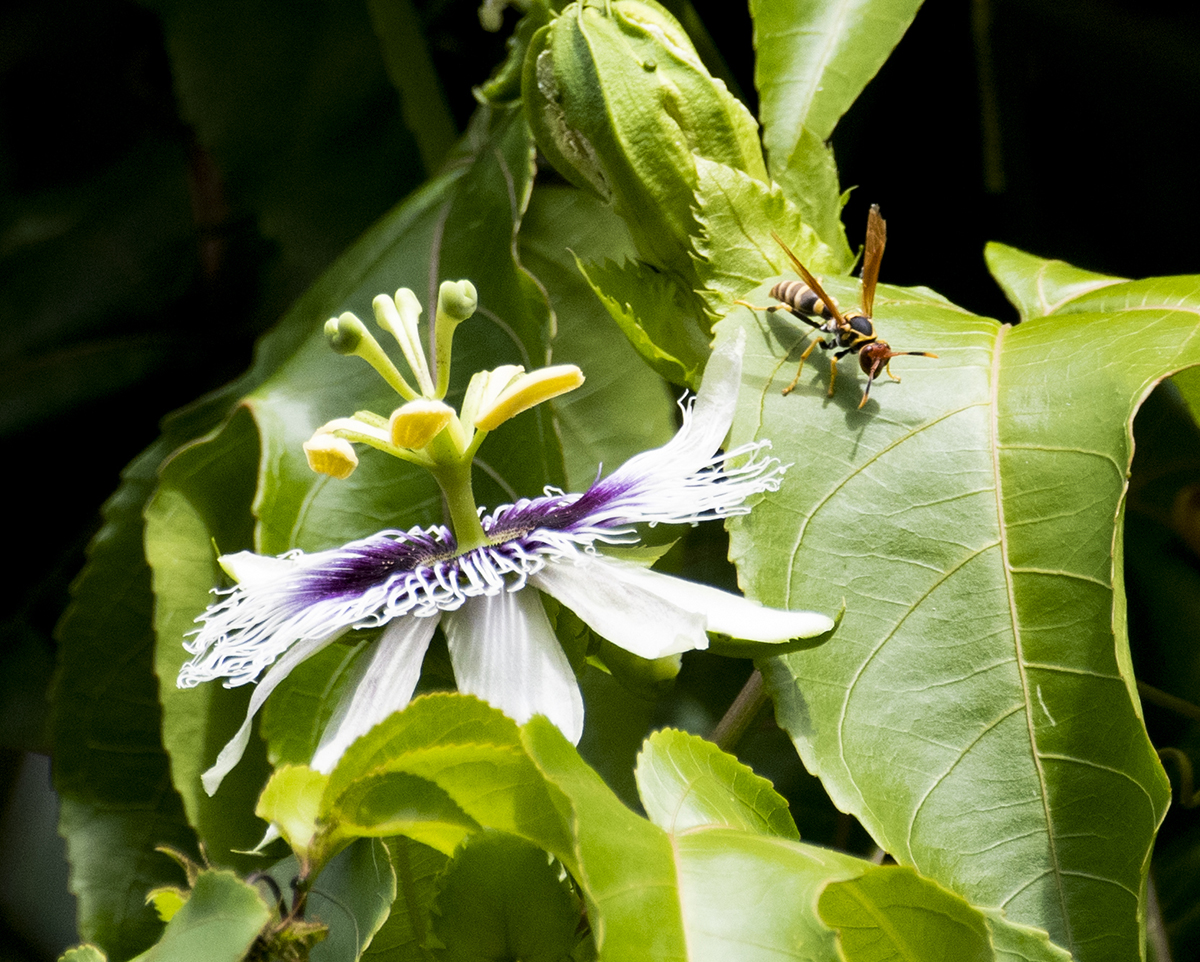
Ah, the idea of passion is so exhilarating, and the flowers present themselves to admirers with such abandon. Yet for us, their promise of sweet fruits has often remained unfulfilled. But this year we were actually blessed with a bowlful of yellow egg-shaped fruit to celebrate spring.
I had cut the vine way back last summer because it seemed like it might be dead. Then in the late fall, when there was a lot of rain, I was happy to see that it perked up and started growing wildly — first up the fence and then all over a nearby tree.
I didn’t see any flowers, though. In February, one day we noticed a green passion fruit hanging in the tree. Very mysterious. The vine had twisted around the poor tree underneath it, and the leaves were all bunched up, so it was hard to see what was going on. Only the one fruit on the edge was easily visible, once you spotted it. But it turned out there were some others hiding inside the tangle, camouflaged because they were the same color as the leaves.
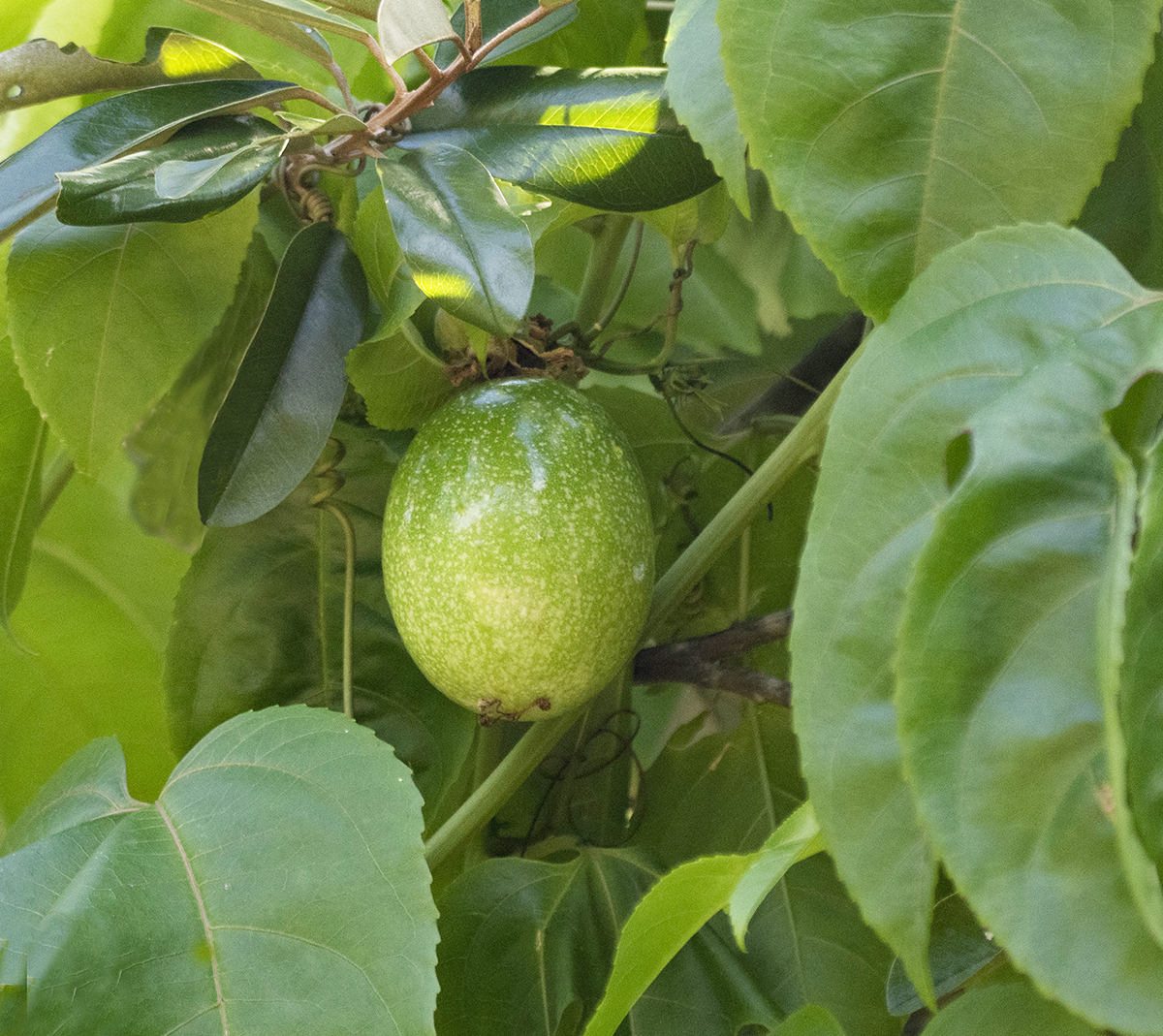
I decided to leave the fruits on the tree until they dropped, rather than bringing them inside when they started to turn yellow. I wanted to see how long it would take for them to ripen naturally. (Often, if you put them in a paper bag they will ripen quickly on the counter.) These didn’t drop from the tree for a couple of months.
In the meantime, after a bit of rain in March, I was excited to see some new flowers coming out. At first, they popped up on the vine like pods. Then the outer leaf-like sections opened, and white flower petals started breaking through.
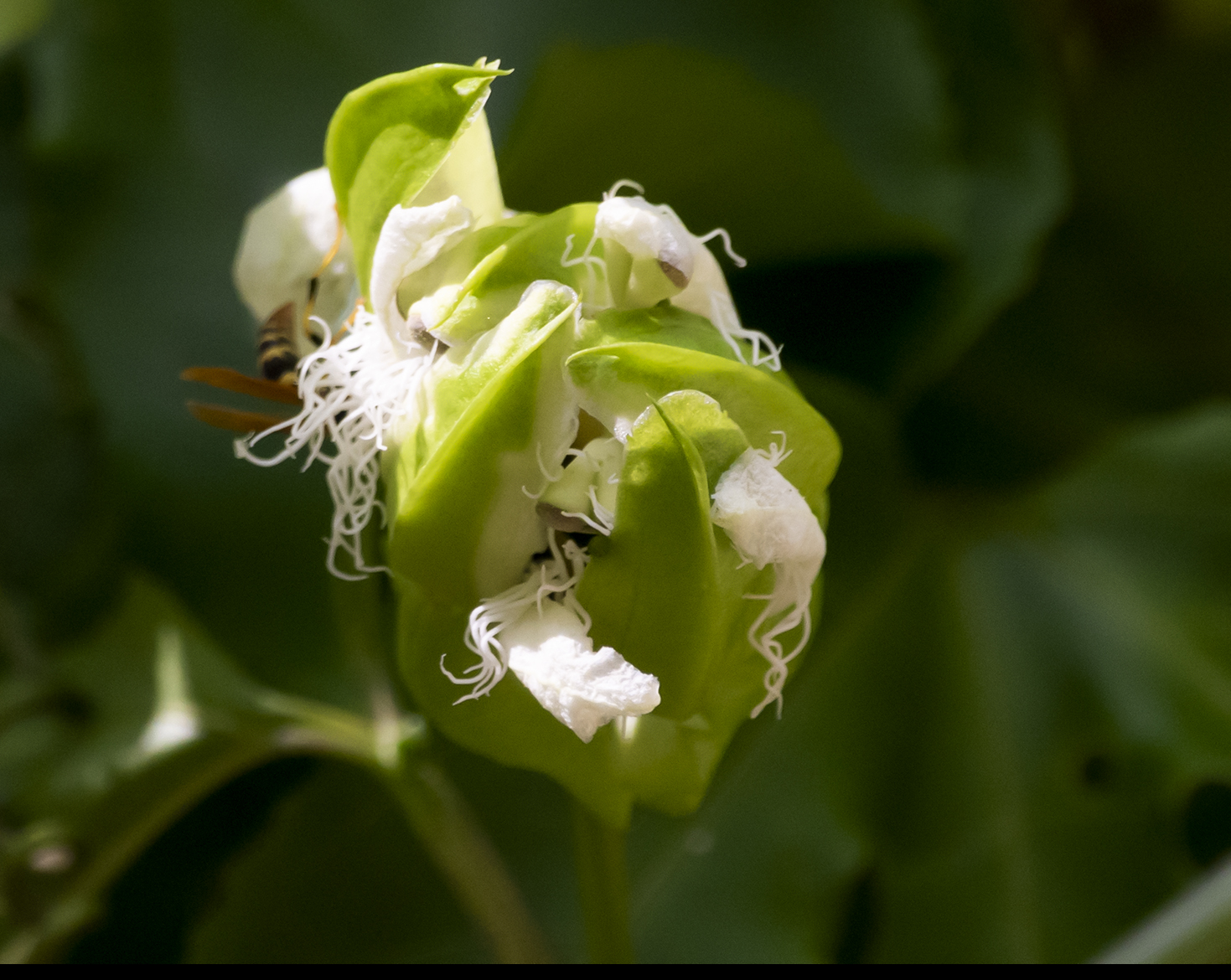
Once the flowers were fully opened, they attracted bees, wasps and butterflies with their nectar. With passion fruit flowers, the nectar is produced below the flower at the base of the outer leaf.
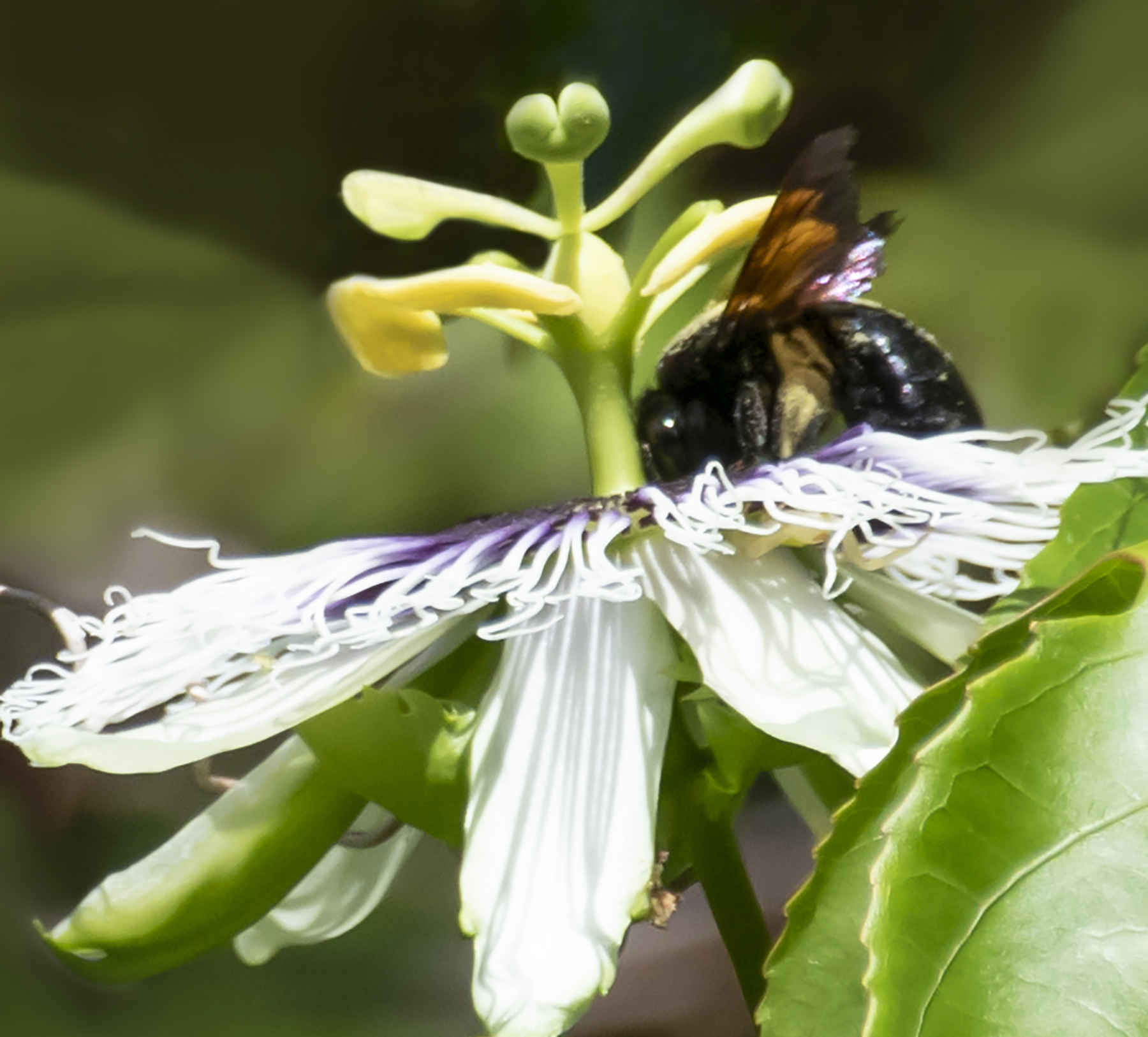
When big black carpenter bees come by to drink the nectar, their backs and legs get covered with pollen located on the (male) yellow anthers above them. Then when they go to the next flower, they transfer that pollen to the three-pronged stigma (female) part of the flower located higher up on the stalk. From there, the pollen gets drawn down inside into the flower’s ovaries, where fertilization of the ovule takes place, and the fruit can start to form.
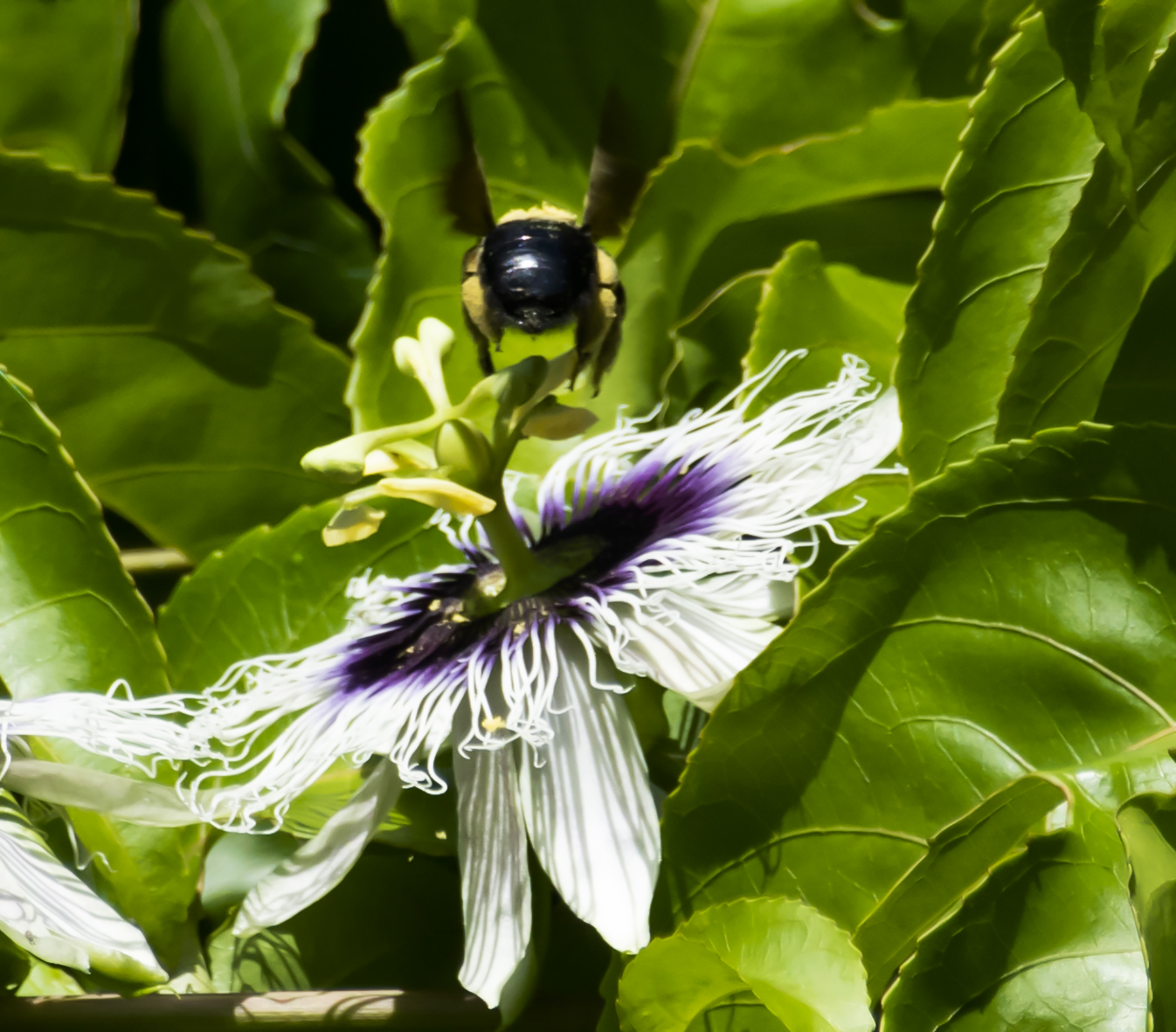
Transferring the pollen from one flower to another allows for cross-pollination, which mixes up the genes and allowing for better evolutionary adaptation possibilities.
Different types of butterflies also came to eat nectar, and at the same time help with the flower’s pollination. A bright orange one was a Julia, or Flambeau, butterfly.
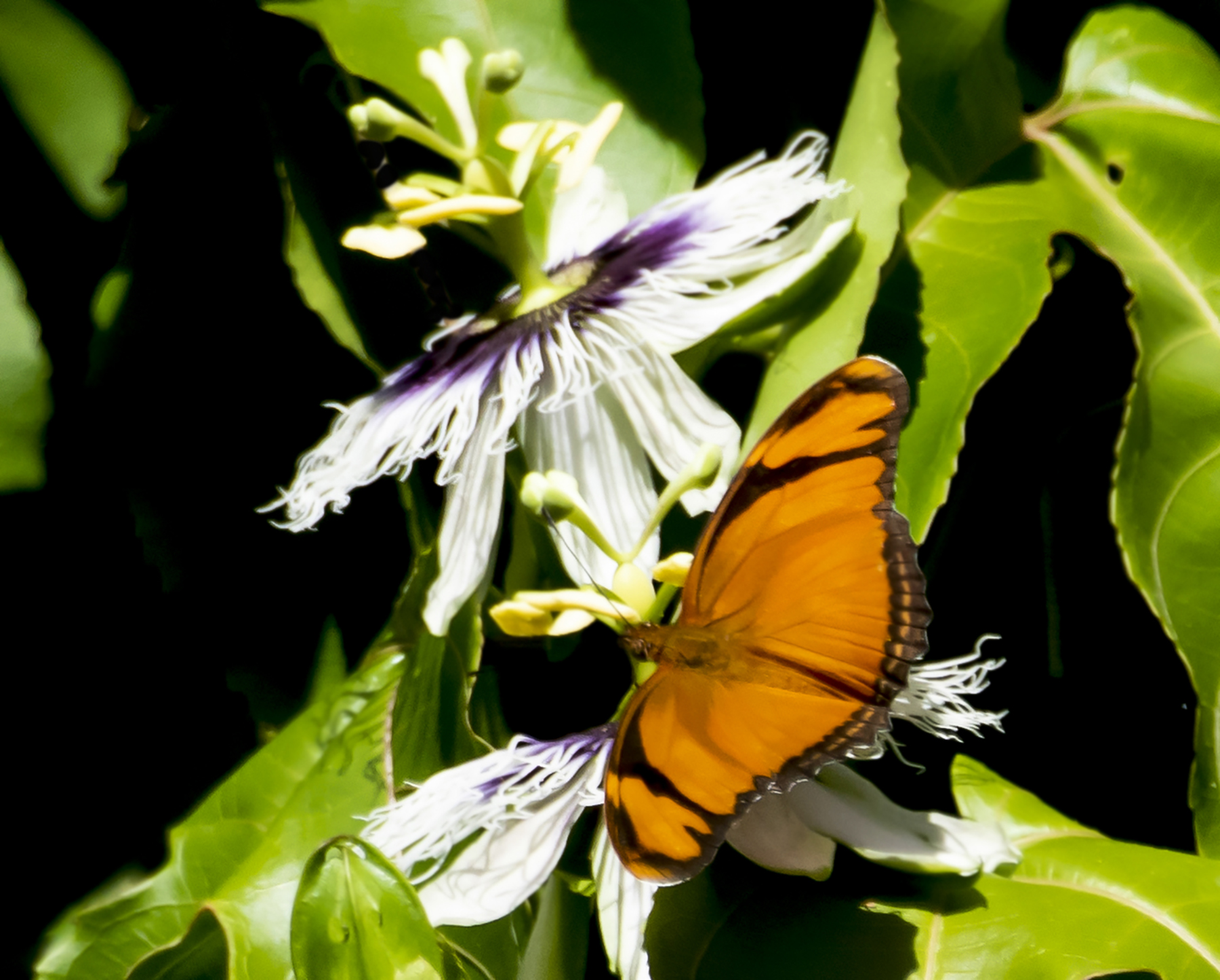
Once fertilization takes place, the flower’s ovary swells and slowly develops into the egg-shaped fruit we eat.
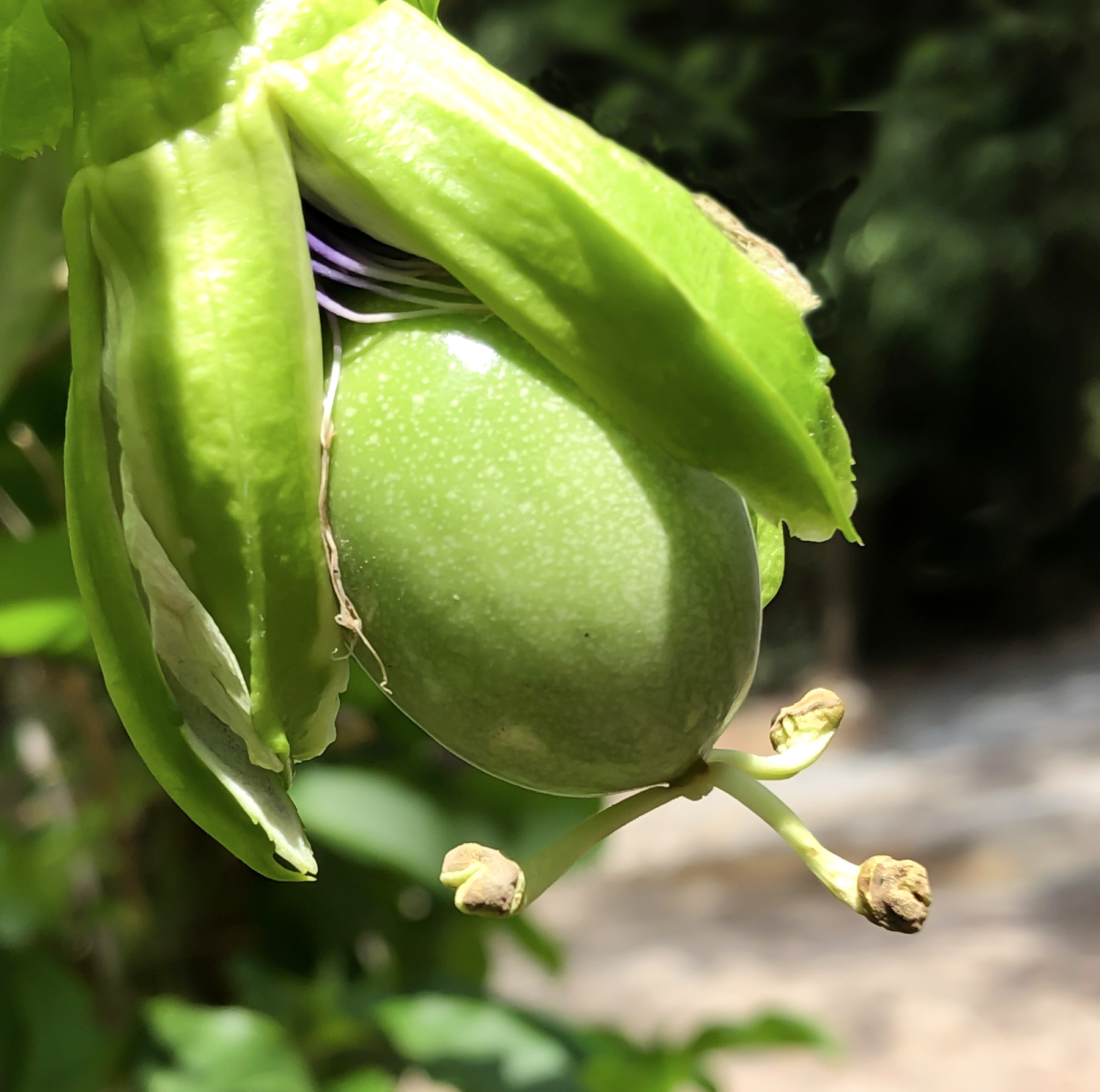
Some of the passion fruits dropped from the tree while they were still green, then ripened after we brought them inside. One morning after I thought we had collected them all, I heard a little thump while I was out watering in the yard. I saw a Pearly-eyed Thrasher inside the tangled vine, and then looked down to find a new passion fruit on the ground. I felt like the universe had surprised me with the gift of a golden egg, and was happy to grab it before the ‘thrushie’ had a chance to bite into it.
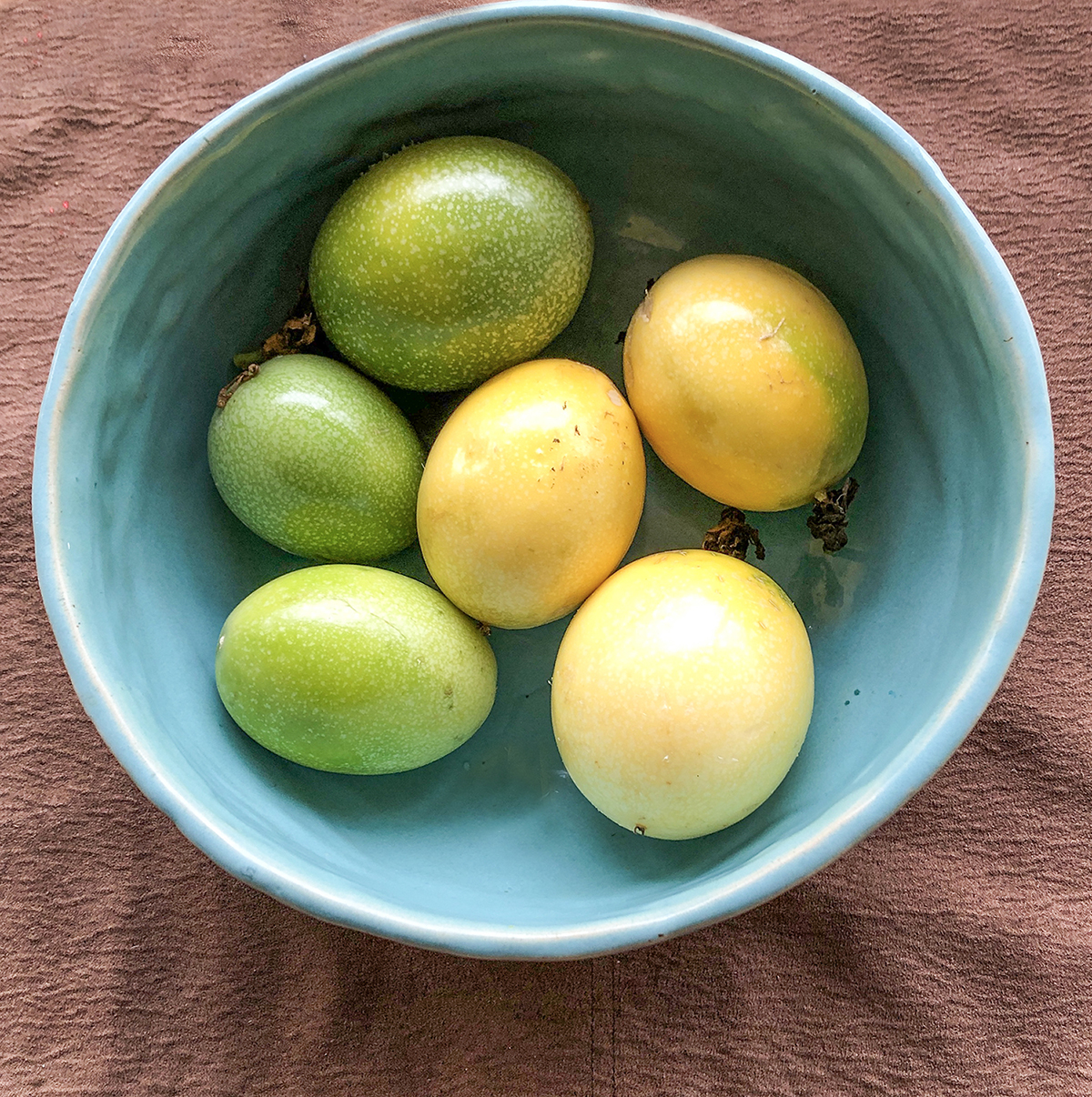
When you cut the fruit in half, there are lots of seeds inside, surrounded by a small amount of deliciously fragrant pulp. Sometimes I just eat the whole thing with a spoon, seeds and all. I have read that these seeds are full of nutrition and not toxic like some fruit seeds. Other times I put the seeds and pulp into a glass of water to soak and enjoy the sweet smell and delicately flavored juice that way. You can also use the juice to flavor elegant tropical cocktails.
I have also been spreading some of the seeds around the yard, in hopes that I will be able to grow more passion fruit vines for next year.
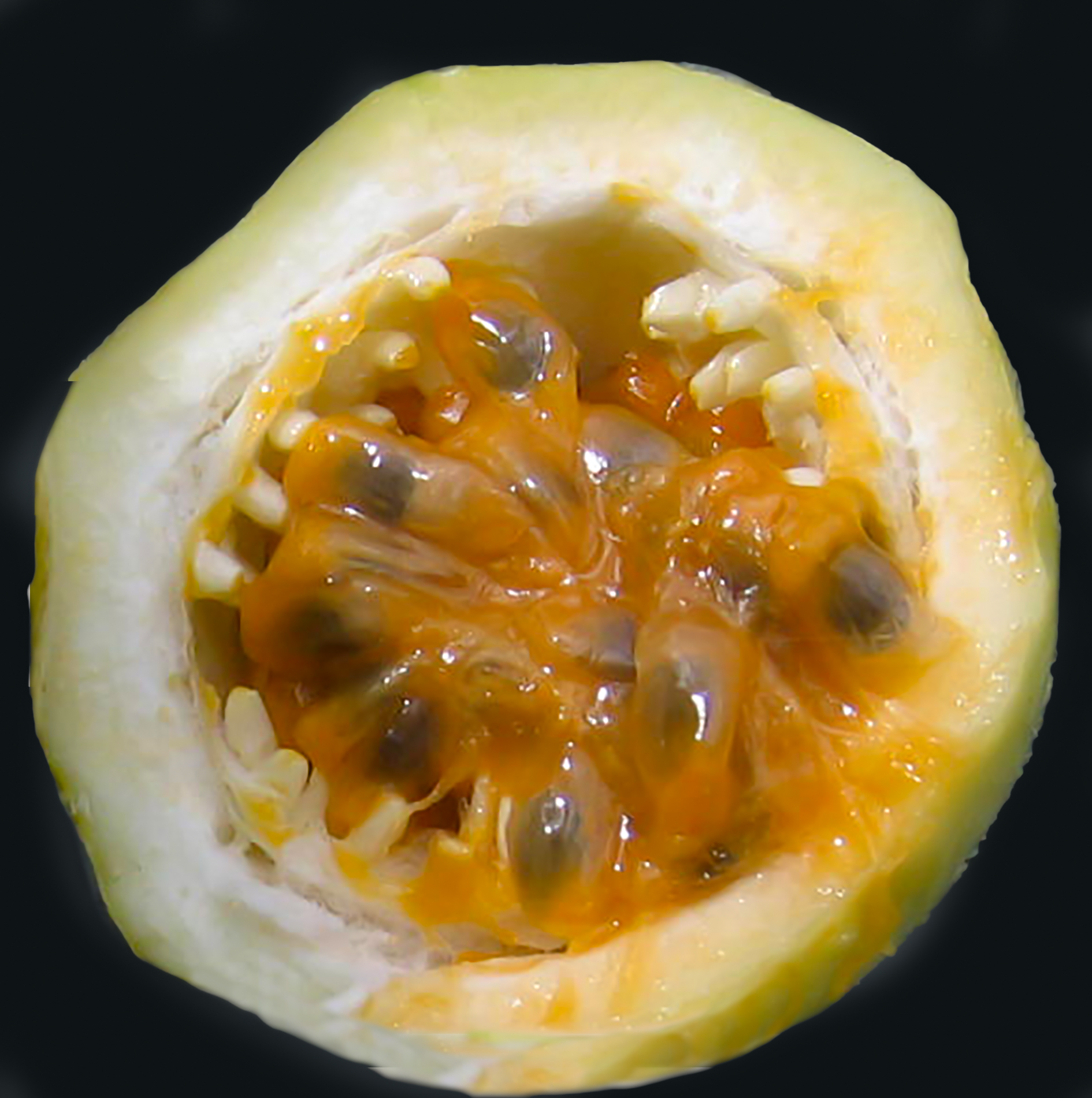
Gail Karlsson is an environmental lawyer, writer and photographer. She is the author of two books about the Virgin Islands — The Wild Life in an Island House, and the guide book Learning About Trees and Plants — A Project of the Unitarian Universalist Fellowship of St. John. She has also recently published A Birds’ Guide to The Battery and New York Harbor. Follow her on Instagram @gailkarlsson and gvkarlsson.blogspot.com.





